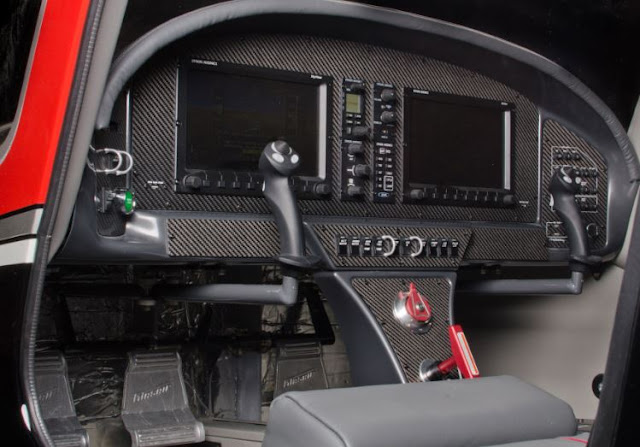Glasair Merlin Specs, Interior, Cockpit, and Price – Glasair Merlin is a high-wing light sport aircraft developed by Glasair Aviation, USA. This aircraft is designed to meet LSA certification requirements based on the American Society for Testing and Materials (ASTM) standards. The aircraft was introduced in April 2014 and completed its first flight at Arlington Airport in April 2015. The flight test lasted for more than 57 minutes. This aircraft was exhibited at AirVenture Oshkosh in August 2015. Glasair Aviation plans to produce the first certified light sport aircraft in its factories in Arlington and China.

Glasair Merlin aircraft can fly at cruise speeds between 100 knots and 105 knots at 75% power. The aircraft kiosk speed is 80.5 km / h without flap and 73 km / h with full flap. The aircraft has an empty weight of 358 kg, a maximum takeoff weight (MTOW) of 599 kg and a useful load carrying capacity of 240 kg.


Other avionics include primary air data and attitude heading reference systems (ADAHRS) and additional ADAHRS, remote magnetometer, engine monitoring module, and GPS antenna / receiver. The avionics platform also includes system software, external data interfaces, mobile maps, GPS navigation software badgers, and automatic pilot systems. It also features radio communications, intercoms and graphics referenced by GEO.
Glasair Merlin is also equipped with onboard autopilot servo, SV32, SV42, and SV52 to automatically keep the aircraft slim when under autopilot control, thereby eliminating the need for pilots to move trim manually.

Glasair Merlin Specs
The Glasair Merlin airframe is made of an all-composite construction that integrates a high-wing layout and three-wheel landing gear. The aircraft is equipped with an optional BRS parachute system that offers additional pilot safety. This includes the configuration of the central control stick under the panel. The overall dimensions of the aircraft include a length of 6.60 m, height of 2.64 m, wingspan of 9.67 m and wingspan of 12.26 m².Glasair Merlin Specs Engine and Performance
The Glasair Merlin aircraft is powered by a Rotax 912iS piston engine which produces around 100 hp (75 kW). The engine moves the two bladed propeller. This aircraft has a fuel capacity of 24 gal and offers a maximum speed of 222 km / h at sea level.Glasair Merlin aircraft can fly at cruise speeds between 100 knots and 105 knots at 75% power. The aircraft kiosk speed is 80.5 km / h without flap and 73 km / h with full flap. The aircraft has an empty weight of 358 kg, a maximum takeoff weight (MTOW) of 599 kg and a useful load carrying capacity of 240 kg.

Glasair Merlin Cabin and Interior
The Glasair Merlin aircraft can accommodate two personnel consisting of a pilot and a passenger in a side by side seating configuration. The aircraft cabin has a width of 46.5 in and there is luggage space with a capacity of up to 22.6 kg. It features a skylight that brings natural light into the cabin and a fainter color to reduce brightness if the cockpit is too bright or hot.
Glasair Merlin Specs Cockpit and Avionics
The Glasair Merlin cockpit is equipped with a Dynon SkyView glass-panel avionics suite including a 10 in SV-D1000T touch screen, 10 in SV-D1000 screen, and SV-D700. The screen offers a high resolution screen and a sophisticated graphics processor to deliver visible and clear output. The cockpit includes a special autopilot control, and a dedicated button for setting the altimeter. It also comes with altitude and heading / track bugs, and a spare battery.Other avionics include primary air data and attitude heading reference systems (ADAHRS) and additional ADAHRS, remote magnetometer, engine monitoring module, and GPS antenna / receiver. The avionics platform also includes system software, external data interfaces, mobile maps, GPS navigation software badgers, and automatic pilot systems. It also features radio communications, intercoms and graphics referenced by GEO.
Glasair Merlin is also equipped with onboard autopilot servo, SV32, SV42, and SV52 to automatically keep the aircraft slim when under autopilot control, thereby eliminating the need for pilots to move trim manually.








No comments:
Post a Comment